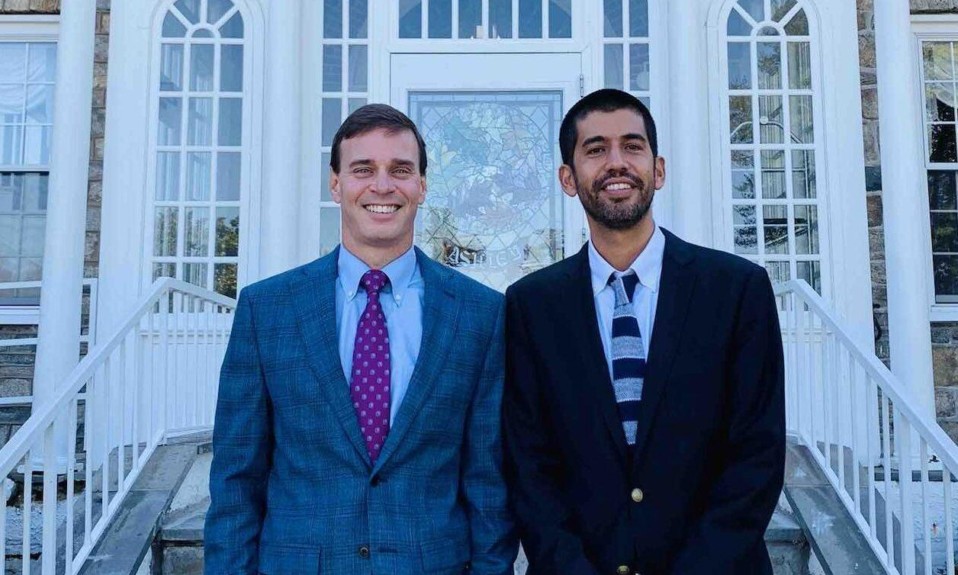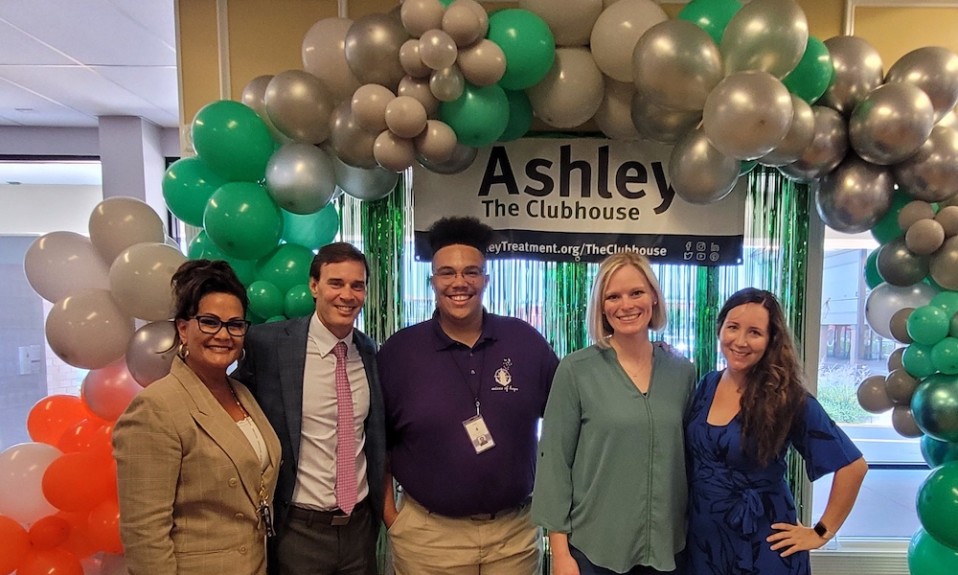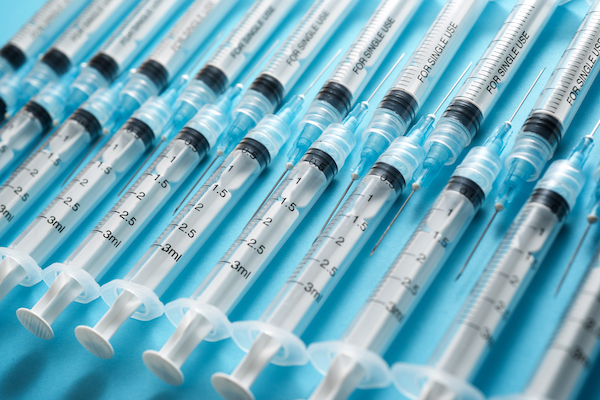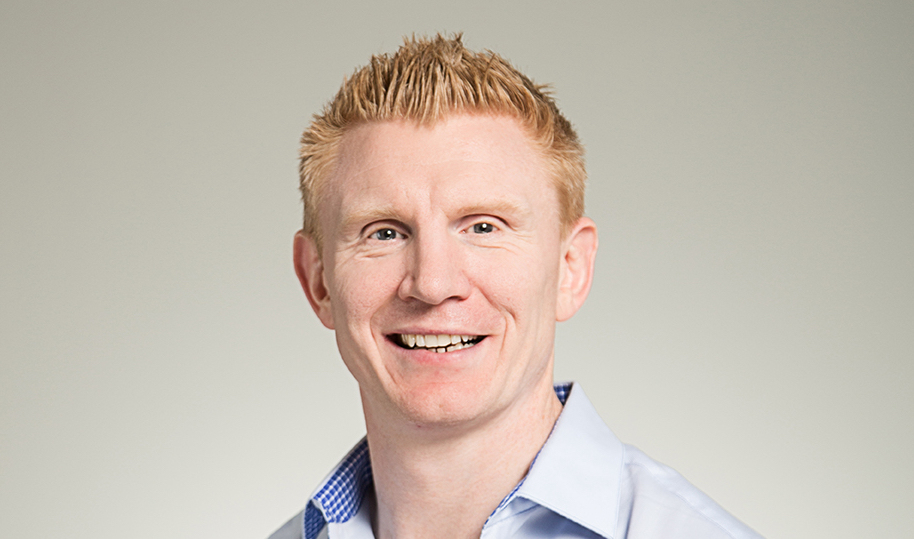The Maryland treatment center’s incoming leaders, Alex Denstman and Greg Hobelmann, M.D., bring business and medical strengths
By Jennifer Taylor
November 17, 2020Respected treatment center Ashley Addiction is on the brink of bold change and innovation, beginning with its leadership model. Next year, on March 1, Alex Denstman [right in the above photo], senior vice president and chief growth officer, and J. Gregory “Greg” Hobelmann [left], M.D., senior vice president and chief medical and clinical officer, will assume the roles of co-CEOs. Both are deeply familiar with the center: Denstman has worked there since 2009 and Hobelmann since 2016.
The two are jointly taking the reins from highly respected treatment CEO David Nassef, who arrived at the 147-acre, Havre de Grace, Md.-based Ashley Addiction in 1996. Nassef championed innovation and left his mark on the facility and the field, working hard to elevate outcomes, work closely with insurance providers and expand treatment services and approaches.
With these two incoming joint CEO roles harnessing business and medical expertise, Ashley intends to continue furthering its role in the research space. Plans are in the works to grow an established relationship with Johns Hopkins University. The focus will help provide leadership with data in areas like outcomes.
A four-month transition period was already set in motion when Denstman and Hobelmann spoke with TreatmentMagazine.com about their shared vision for Ashley’s future—and what they will prioritize and innovate, together.
What is your shared vision for the future for Ashley?
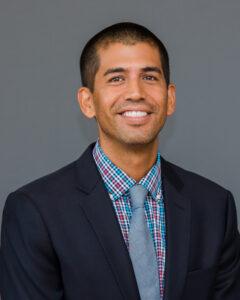
Alex Denstman: We did 12 months of succession planning, hundreds of hours. During COVID-19, we didn’t stop. We had our board of directors involved. Obviously, Dave was very involved. We had a couple of consultants helping us through this process. My fondest memory of this whole process was when Greg and I were asked to go in separate rooms, take 30 minutes and write your vision for Ashley. What is the organization going to look like in five years?
We came back, we read our documents, and it was essentially the same document—just expressed differently. We very much are like-minded. We’re confident that this kind of leadership model will work because we have a shared vision. We don’t want to grow for growth’s sake. We’ll grow, but growth for us means a deepening of our services. We want to customize some of the treatment for certain special populations who have very specific needs. Research and outcomes will be the key for us. That’s why Greg and his team are so critically important. To whatever extent we can inform our care and move Ashley forward, we’re going to share that information with people for free. It’s going to move our field forward.
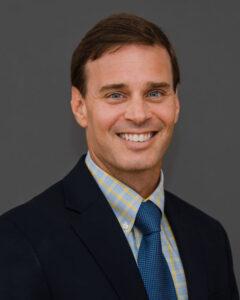
Greg Hobelmann: Everything we think about with regard to growth [and] quality, we’re thinking about it in terms of how we can better treat the patient. It’s not just treating more patients, but understanding there’s a huge problem with regard to access to treatment. We want to make sure Ashley is accessible to everybody. We are in-network with insurances. We take many commercial insurances as well as Medicaid in our outpatient facility, and we give over $3.5 million of scholarship per year. Treatment at Ashley is accessible to everybody on a continuum of care starting at the residential level if patients need that level, and extending all the way out to outpatient care.
What are you most excited about innovating at the treatment center?
Denstman: I’ll use my own experience. I was a patient here in 2003. Part of my love for Ashley is my own personal indebtedness to this organization and getting my start in recovery. I benefited from getting my start here in recovery, but it is supported by long-term care by 12-step participation—the whole deal. Substance use disorder is going to exist and put a strain on our society long after COVID-19 is treated. If that evolution can continue to occur, then I think we’ll do great things.
Hobelmann: The piece that will help us be innovative is really looking at outcomes and research, because we will learn how to be innovative through our studies. It’s not just our [studies. It is also] whatever is learned across the board, and the treatment of substance use disorders in the whole field. We want to implement whatever is evidence based and clinically appropriate.
What is one policy change you’d like to make if you were in charge of our country’s laws and healthcare?
Denstman: For me, being on the business development, operation side, it’s still parity. As many breakthroughs as we’ve made with some of our payers—and they’ve been tremendous—it’s been a true partnership. [But] we don’t see it across the board. There’s still a reluctance there for substance-use disorder needs to be treated the same way any medical condition would be treated. I don’t think it’s a shock to anyone. I want to be an optimist. I don’t want to sound all gloom and doom. As challenged as we are about that issue around parity, I’ve been really encouraged because some insurance companies are very understanding. They’re making the investment in us and they’re trusting in our care. They’re seeing the long-term outcomes resulting in greater healthcare cost savings for them. It’s not hopeless. We’re making strides, for sure. This is not unique to substance use. Access to healthcare is a national issue. That’s why it’s so central. My hope is that it only improves over time.
Hobelmann: I agree with that completely. I think we have to look at some reduced regulation of treatment services. The idea there is that will expand access to treatment, and it will reduce discriminatory practices. That, in turn, reduces the stigma, which increases not only access and willingness of patients to come into treatment but also allows them to stay in treatment for a longer period [and] increase the engagement in treatment.
The evidence-based treatment programs are doing a really nice job understanding harm reduction. The medical world is doing a better job of understanding the need for the psychosocial approaches, as well. If we can really become aligned and understand that we really do have the same goal, it doesn’t really matter how you get there. If we can be aligned in the goal of recovery, that would be the thing I would like to see change the most across the board. When we become aligned, we then will have much greater power not only to increase access to treatment but to learn about treatment through partnerships with academic institutions. By looking at how we are following up with patients and performing outcome studies, we will learn a lot more. When we are fully integrated in the healthcare model, we will then be able to have a much larger voice, so to speak, and involve a much larger audience. That’s how we really push forward in the field.

What parts of Ashley’s legacy will you prioritize moving forward?
Denstman: Addiction treatment has always been this sort of subset of the healthcare system. But in reality, 20 million Americans suffer from some form of substance use disorder. [Ashley Addiction founder] Father Martin—one of the reasons why he was a pioneer was [because] he called alcoholism our country’s No. 1 health concern in the 1970s. He understood then, but I think people widely accept now that substance use disorder is a major problem. It’s hard to find a family now who hasn’t been directly impacted by it. But it’s also one of the most treatable illnesses there is. There is certainly a solution.
Part of that evolution for us is partnering with institutions like Johns Hopkins, investing in research and outcomes, [and] doing everything we can to inform our care. Partnering with payers [insurance companies]—we don’t want to have that adversarial relationship our field had at one time with payers. Our interests are very much aligned. We want to get their members into good recovery. [We] want to save insurance companies healthcare costs. If you consider Ashley’s evolution over the past 38 years, it looks very different. The core principles are the same; our decision making [is still] anchored in our values. [Ashley’s] legacies are very much alive. That won’t ever change. The treatment approach has evolved a great deal. That’s something we take a great deal of pride in.
Substance use disorder is going to exist and put a strain on our society long after COVID-19 is treated. If that evolution can continue to occur, then I think we’ll do great.”— Alex Denstman, senior vice president and chief growth officer and incoming co-CEO, Ashley Addiction
When we are fully integrated in the healthcare model, we will then be able to have a much larger voice and…involve a much larger audience. That’s how we really push forward in the field.”—Greg Hobelmann, M.D., senior vice president and chief medical and clinical officer, incoming co-CEO, Ashley Addiction
Hobelmann: I’m glad we’re very much aligned in our thought process here. But honestly, the term “treatment industry” is distasteful to me just in general. And it goes back to how treatment of substance use disorders evolved. There was a dark period throughout the 20th century where you had people, very well meaning people, developing a model outside of the healthcare system. Within the healthcare system, there wasn’t very much paid attention to it. They did some work on the pharmacology and some of the neuroscience, but they evolved differently.
You have what we would consider the treatment industry now, which is the residential programs that are out there [that] have done a tremendous job overall. But it hasn’t been fully aligned with what’s going on in the larger healthcare field, particularly in academic medicine where they’re viewing it differently. Now we have a gap that exists between these two areas. There is the idea of harm reduction and the idea of abstinence-based treatment, right?

Do you envision treatment will be integrated into hospitals and other healthcare institutions?
Hobelmann: Absolutely. So this should be very much integrated into all areas of medicine. People are really looking into this, which is great. How do you increase access to treatment in multiple different areas? We’re looking at starting treatment in primary care programs and emergency room departments. But whatever provider you might see should be able to address it, at least take a look. Screen people and provide resources when and if needed.
Denstman: It’s also worth noting that in 2015 and 2016, we opened two outpatient locations, and they’re both in hospitals. So these were very much partnerships with healthcare systems in our region. One is with Upper Chesapeake Medical Center, which is part of the University of Maryland health system. And the other one is with Union Hospital, which is part of ChristianaCare health system. We understood the importance of meeting people where they are and getting to those hospitals. A lot of people suffering from substance use disorder use the emergency department as their primary care doctor. Obviously, substance use disorders are co-occurring, where [people] have other health concerns. So they find themselves in hospitals.
Forty percent of our patients who come to our residential location or flagship location are referred to us by providers. Part of how we sustain ourselves is that we invest greatly in collaborating with providers—everything from hospitals to primary care doctors to psychologists and therapists and so on. That’s part of our mandate. We have a responsibility to be thought leaders in the field and educate the community as a whole.

How did you prepare Ashley for all the changes as a result of COVID-19?
Denstman: We pulled our management team together and made swift decisions. We reduced our occupancy so we could create a more manageable community from a health and safety standpoint. We put certain guidelines in place immediately, but we took a number of beds offline.
One of the things we did was create a stabilization unit. When patients admit to our residential location, they’re in a private room for 48 to 72 hours. There are elevated masking and distancing guidelines. And they’re under greater oversight by our medical staff. So we’re essentially a sub-acute medical setting. [Patients are] in this unit, they get a Covid-19 test, they get the nasal swab test. They don’t transition to the general patient community until we’ve received a negative result, obviously.
Because of that, and because of the steps we took, we have not had a positive case in our patient community. We’ve been very fortunate. Whatever investment we had to make in our staff and [in] our programming and the facility itself to ensure we could keep people safe, we’ve done that.

How has COVID impacted recovery?
Hobelmann: It’s pretty clear that the overall pandemic and what it’s done societally is worse than the acuity of psychiatric illnesses—and not only the acuity, but the overall prevalence. Things like anxiety, depression, likely suicide and, of course, substance use disorder. Anecdotally, here, we have seen an increase in call volume and desire to come to treatment. But we also know that liquor sales are up, people are drinking more and so forth. We are going to have more consequences as a result. Hopefully, we’ll be able to respond. Not necessarily from just the treatment industry because, you know, we’re certainly continuing to do what we do, but other measures societally.
In any case, what we have done is we continue to operate, which I think is the most important thing we can do. And we’ve adapted. Very quickly we went to virtual services in our outpatient facilities where we treat three-quarters of our patients. We continued to be able to have people come in for intakes and admit them into those programs.
Denstman: I think it’s worth noting, too, that we’ve had to make certain adjustments during COVID-19. It’s sort of a silver lining here that there are certain things we’ve discovered that are very useful for us moving forward. Even beyond COVID-19, our alumni engagement is incredibly important. In late March, we started offering Zoom 12-step support groups. In-person meetings are still largely not occurring in this region. We’ve had thousands of people participate in these online 12-step support groups that our staff facilitates [and] certain alumni facilitate for many months. They were offered three times a day. You would get people from across the country a day removed from treatment or 25 years removed from treatment as a huge cross section of people. We discovered there’s value in that. We will continue to offer that beyond COVID-19.
The stabilization unit: There’s an advantage to having a unit devoted to helping a person admit to treatment, get acclimated and feel settled before transitioning to the patient community. That phased approach has proved beneficial. As difficult as this has been, we’ve discovered some useful things, as well, in addition to the virtual value of personal services.
How does Ashley Addiction measure treatment outcomes?
Hobelmann: We have to start at the baseline, which is assessing what we’re doing and then assessing how patients are doing over time. It has to be over a long period of time, because when we assess recovery, 30 days is very different than a year, which is very different than five years. It’s not just, has someone remained abstinent or not? There are many other metrics that we’re using, including things like quality of life, improved relationships, ability to work or go to school.
Beyond that, other symptoms we know are really important. Psychiatric symptoms, like how they’re doing with their mood or anxiety, [whether they are] having suicidal thoughts. And it goes way beyond what I’m talking about. We’re looking at the spiritual component and how that plays into it. It’s very clear that spirituality plays a role. We have to first define what spirituality is, and then define those metrics so that we can show that people are becoming actually more spiritual. That’s going to be a big part of what we’re doing over the next several years.
We’re now very much in partnership with [Johns] Hopkins. We have a faculty member who spends 40% of his time with us, and has built quite a research program here. We get to ask these questions and actually develop the study design, do the study and then write the manuscript and publish. And that’s what we’re planning to be doing a great deal of over the next several years.
Denstman: I’ll add to that we have data now that our payers, or insurance companies, have shared with us. We do have a greater sense through that partnership—they have a great deal of data. They know what percentage of our patients leave our primary residential setting and engage in aftercare. So 100% of our patients get a continuing care plan. We know that longer-term engagement results in a greater likelihood a person will get and stay in recovery. They share that data with us.
Back in the 1980s, [the question was asked,] “What’s your success rate?” [The answer typically was,] “Well, it’s 100% if you essentially take our recommendations.” That wasn’t unique to Ashley; I think that was just sort of the mindset in the field. Now there’s a real readiness and we’re doing it with the understanding that we may have to make adjustments as we have a better understanding of what’s most effective. We’re going to have to invest more in our care. It’s going to require greater staff. There’s a real eagerness on our part because ultimately it’s going to result in greater success. So it’s exciting.


